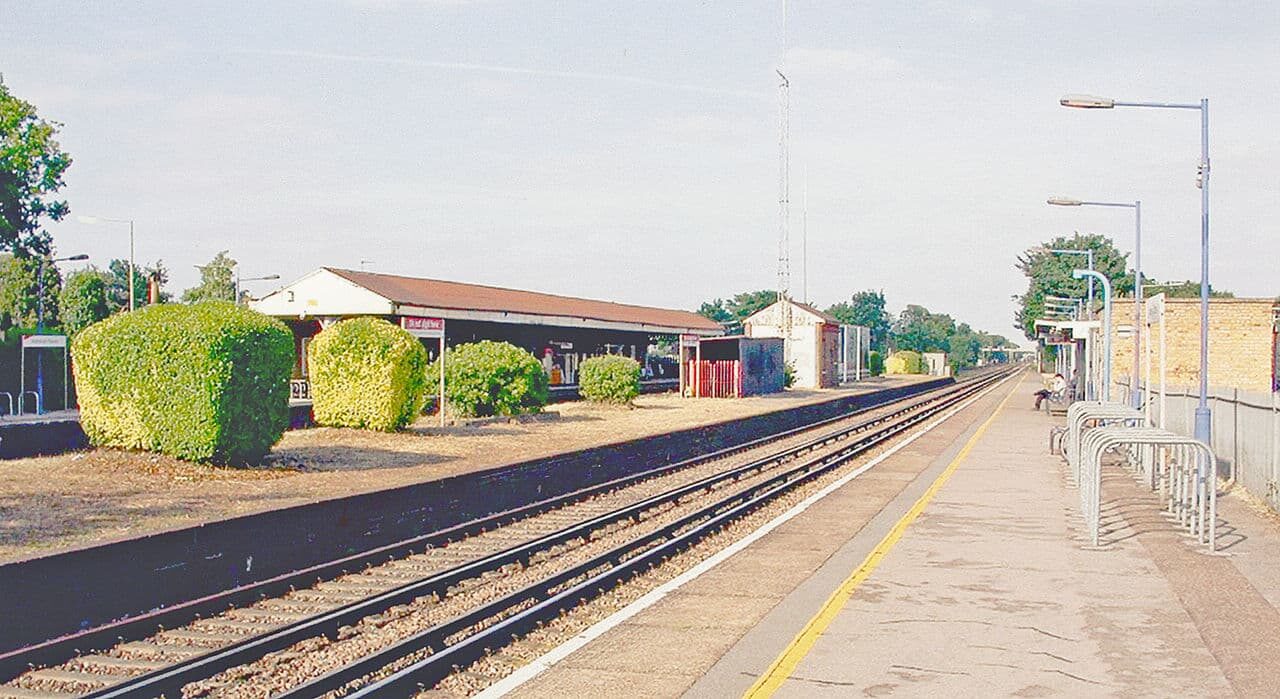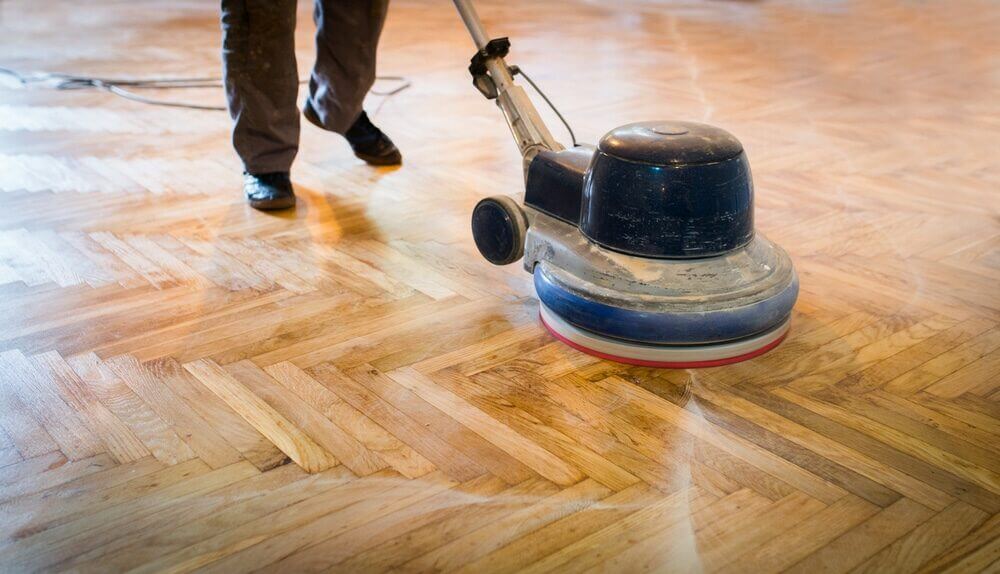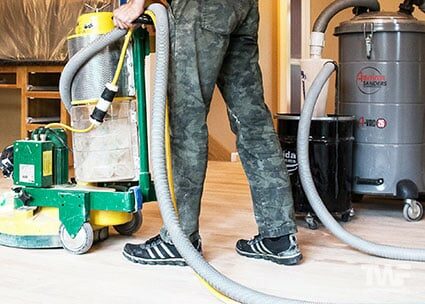London:
Nationwide:
Waterproof Wood Flooring: A Comprehensive Guide
Posted on December 6, 2023
Wood Flooring
A Thorough Guide to Waterproof Wood Flooring
Wood flooring has long been a symbol of timeless elegance and warmth in our homes. The rich grains and natural beauty of wood can transform any space into a welcoming haven. However, traditional wood flooring has a significant vulnerability: water. Moisture can wreak havoc on wood, causing warping, rotting, and a host of other issues that can be both costly and frustrating to address.
Enter waterproof wood flooring, a game-changer in the world of home design and functionality. In this comprehensive guide, we will explore everything you need to know about waterproof wood flooring—a modern solution that marries the classic charm of wood with the resilience needed to withstand water-related challenges.
We will delve into the different types of waterproof wood flooring, the benefits it offers, how to choose the right one for your specific needs, installation and maintenance tips, comparisons with traditional wood flooring, and much more. Whether you’re a homeowner looking to renovate your space or a DIY enthusiast eager to embark on a new project, this guide is your go-to resource for making informed decisions about waterproof wood flooring.
By the end of this guide, you’ll have the knowledge and confidence to select the perfect waterproof wood flooring for your home, ensuring both beauty and functionality coexist seamlessly. Let’s dive into the world of waterproof wood flooring and transform the way you think about flooring options forever.
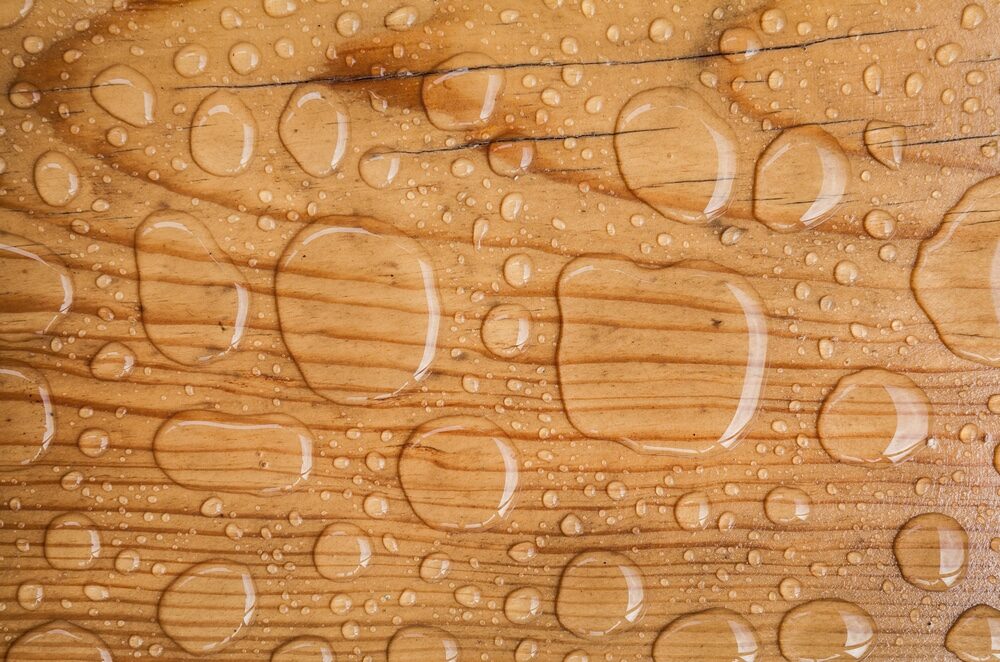
Types of Waterproof Wood Flooring
When it comes to waterproof wood flooring, you have several options to choose from. Each type offers unique advantages and aesthetics. Let’s explore the most popular types:
Engineered Wood Flooring
- Construction: Engineered wood consists of multiple layers, with a real wood veneer on top. The layers underneath are typically made of plywood or high-density fiberboard (HDF).
- Waterproof Features: Some engineered wood floors come with a waterproof core or are treated with waterproof coatings. This makes them more resilient to moisture compared to solid hardwood.
- Appearance: Engineered wood flooring retains the natural look and feel of real wood, making it a popular choice for those who want the classic wood appearance with added durability.
- Installation: It can be installed as a floating floor, nailed down, or glued down, offering flexibility in installation methods.
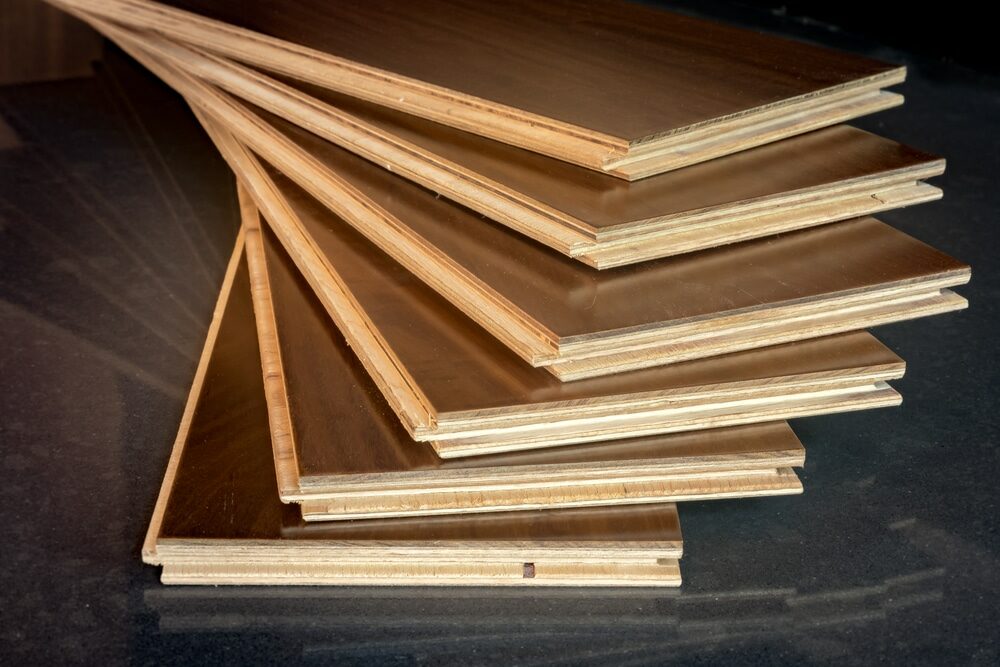
Luxury Vinyl Plank (LVP) Flooring
- Construction: LVP is made from several layers, including a rigid vinyl core, a decorative print layer that mimics wood grain, and a protective top layer.
- Waterproof Features: LVP is inherently waterproof due to its vinyl composition, making it highly resistant to water damage.
- Appearance: LVP comes in a wide range of designs and textures, often convincingly replicating the look of hardwood. It’s available in various colors and styles.
- Installation: LVP is typically installed as a floating floor, and it’s known for its ease of installation.
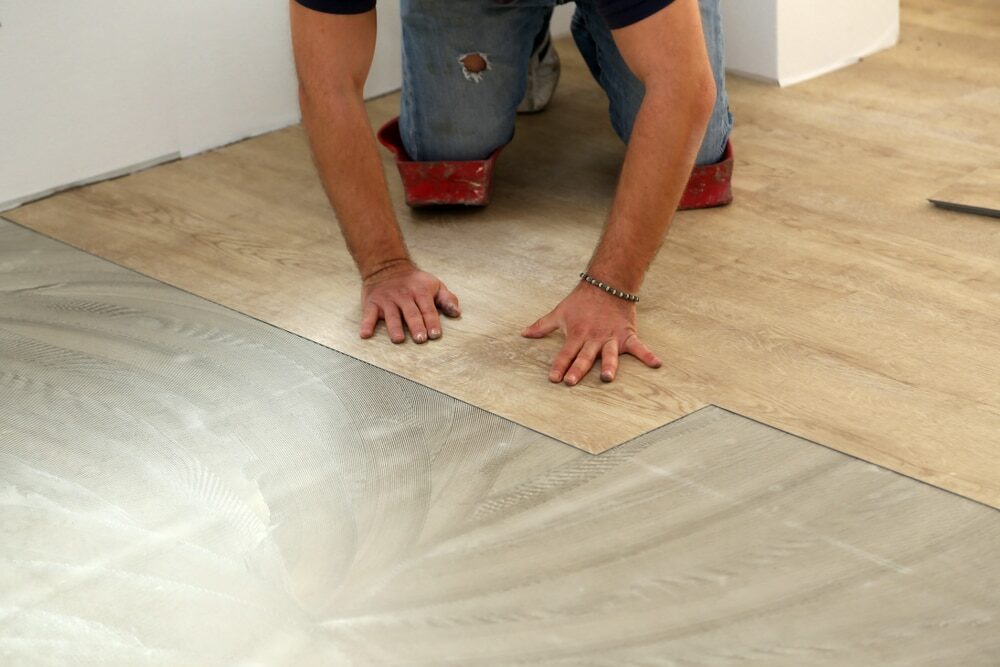
Waterproof laminate flooring
- Construction: Waterproof laminate flooring features a dense fiberboard core that is treated to resist water damage. It has a high-pressure laminate (HPL) top layer with a printed wood pattern.
- Waterproof Features: Waterproof laminate is designed to withstand moisture and spills, thanks to its special core and sealed edges.
- Appearance: Like LVP, waterproof laminate offers a variety of wood-like designs and colors. It’s an affordable alternative to real wood.
- Installation: It’s typically installed as a floating floor, and many varieties come with click-and-lock systems for easy DIY installation.
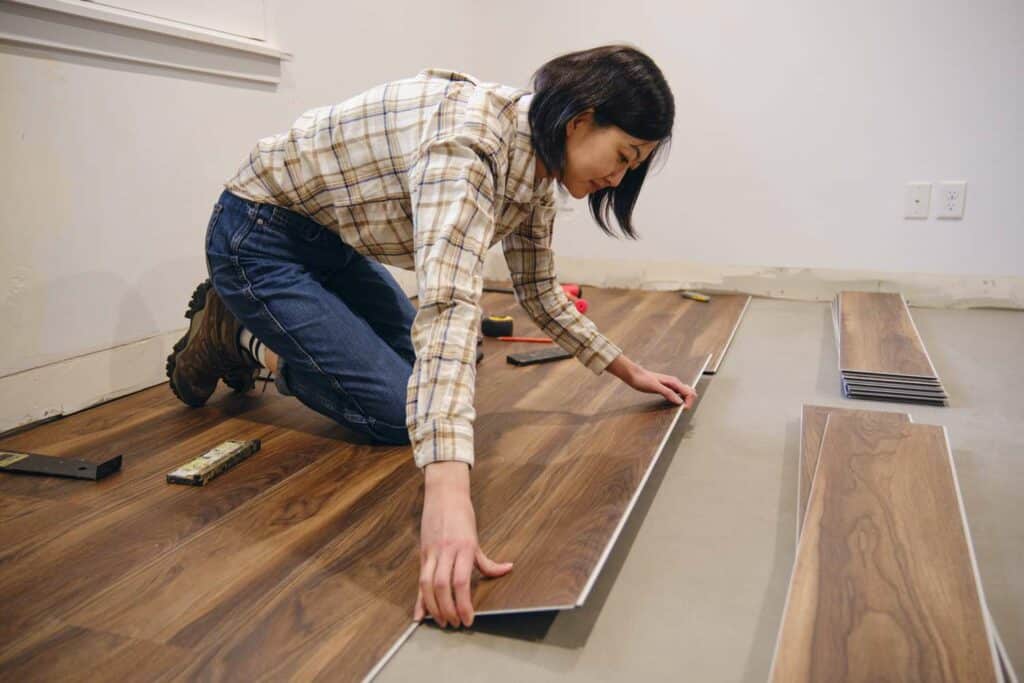
Solid Hardwood with Waterproof Sealant
- Construction: Solid hardwood is genuine wood through and through. To make it waterproof, it’s treated with a special sealant that adds a layer of protection against moisture.
- Waterproof Features: While solid hardwood is naturally susceptible to water damage, the application of a waterproof sealant can make it more resistant.
- Appearance: Solid hardwood retains its classic, authentic wood appearance and can be refinished to maintain its beauty over time.
- Installation: It’s usually nailed or stapled down, and professional installation is often recommended.
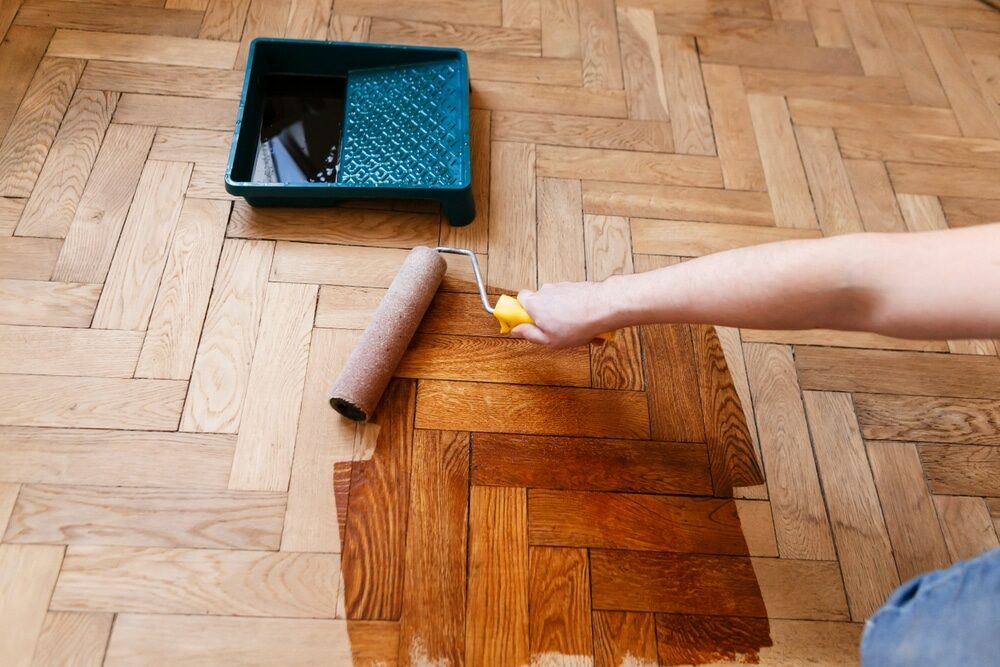
Each type of waterproof wood flooring has its own set of advantages and disadvantages. Your choice will depend on factors like your budget, aesthetic preferences, and the specific requirements of the space where you plan to install it. In the following sections, we’ll dive deeper into the benefits and considerations for each type.
Benefits of Waterproof Wood Flooring
Waterproof wood flooring offers a range of advantages that make it a compelling choice for homeowners and businesses alike. Here are some key benefits to consider:
1. Durability and Longevity
- Waterproof wood flooring is designed to resist moisture and water damage, which helps it maintain its structural integrity over time.
- Unlike traditional wood flooring that can warp, swell, or rot when exposed to water, waterproof options can withstand spills, humidity, and even occasional flooding without significant damage.
- This durability often translates to a longer lifespan, saving you money in the long run as you won’t need to replace it as frequently.
2. Resistance to Water Damage
- The primary advantage is in the name—these floors are waterproof. They can handle spills, pet accidents, and wet mopping without any concern for water seeping into the material.
- This resistance to water damage makes them ideal for high-moisture areas such as bathrooms, kitchens, basements, and laundry rooms, where traditional hardwood might not be suitable.
3. Low Maintenance Requirements
- Waterproof wood flooring is relatively low-maintenance. It is easy to clean and typically only requires regular sweeping and occasional mopping to keep it looking its best.
- Unlike some other flooring materials, waterproof wood flooring doesn’t require refinishing or resealing over time.
4. Aesthetic Versatility
- Waterproof wood flooring comes in a wide range of designs, colors, and textures, allowing you to choose the perfect style to complement your interior decor.
- You can achieve the timeless and elegant look of real wood without worrying about water damage.
5. Health Benefits
- Since waterproof wood flooring is resistant to moisture, it’s less likely to harbor mold, mildew, and allergens, contributing to a healthier indoor environment.
- It’s an excellent choice for individuals with allergies or respiratory sensitivities.
6. Increased Property Value
- Installing waterproof wood flooring can add value to your home or commercial space. Potential buyers and renters often appreciate the combination of aesthetic appeal and practicality.
- It can make your property more attractive in the real estate market.
7. Environmentally Friendly Options
- Some waterproof wood flooring products are eco-friendly, made from sustainable materials, and feature low-VOC (volatile organic compound) finishes.
- Choosing these options can be a responsible choice for the environment.
In summary, waterproof wood flooring offers a compelling combination of durability, resistance to water damage, low maintenance, aesthetic versatility, and potential health benefits. Whether you’re looking to upgrade your home or enhance a commercial space, these advantages make waterproof wood flooring an attractive and practical choice for a wide range of applications.
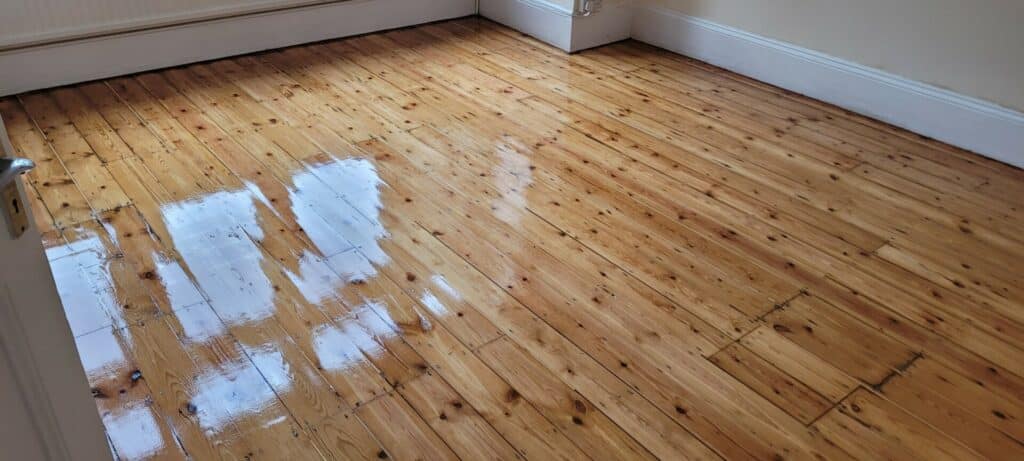
Choosing the Right Waterproof Wood Flooring
Selecting the perfect waterproof wood flooring for your space is a crucial decision that depends on several factors. Here are key considerations to help you make an informed choice:
Room Usage
- Consider the room where you plan to install waterproof wood flooring. Different rooms have varying levels of moisture exposure and traffic. For example, a bathroom or kitchen may have higher humidity and more spills than a bedroom or living room.
- Choose a flooring type that suits the specific needs of the room. For high-moisture areas, such as bathrooms and basements, go for options like luxury vinyl plank (LVP) or waterproof laminate.
Budget
- Determine your budget for flooring materials and installation. Waterproof wood flooring options vary in price, so it’s essential to set a budget to narrow down your choices.
- Keep in mind that while some options may have a higher upfront cost, they can save you money in the long run due to their durability and low maintenance requirements.
Aesthetic Preferences
- Consider your design preferences and the overall style of your home or space. Waterproof wood flooring comes in a wide range of colors, patterns, and textures, allowing you to achieve the look you desire.
- Explore different samples and swatches to ensure your choice complements your interior decor.
Installation Method
- Determine your comfort level with the installation. Some waterproof wood flooring options, like luxury vinyl plank and waterproof laminate, are known for their ease of DIY installation.
- If you’re not confident in your DIY skills, or if you’re installing in a complex space, you may prefer to hire a professional installer.
Comparing Different Materials
- Research the specific properties of different waterproof wood flooring materials. Understand their core composition, wear layer thickness, and waterproofing technology.
- Compare factors such as scratch resistance, stability, and heat resistance to ensure the flooring meets your requirements.
Brand Reputation
- Investigate the reputation of the brand and manufacturer. Established and reputable brands often offer higher-quality products and better warranties.
- Read reviews and ask for recommendations from friends, family, or professionals in the flooring industry.
Warranty and Maintenance
- Check the warranty offered with the flooring. A longer warranty period can provide peace of mind regarding the durability and performance of the product.
- Familiarize yourself with the maintenance requirements of your chosen flooring material to ensure it aligns with your lifestyle.
Climate Considerations
- Take your local climate into account. In areas with extreme temperature and humidity fluctuations, it’s essential to choose a flooring option that can withstand these conditions without warping or damage.
Environmental Impact
- If sustainability is a concern, look for eco-friendly options made from sustainable materials and featuring low-VOC finishes.
By carefully evaluating these factors and conducting thorough research, you can confidently select the right waterproof wood flooring that not only meets your practical needs but also enhances the aesthetics of your space. Making an informed choice will ensure your investment in flooring is both functional and visually pleasing.
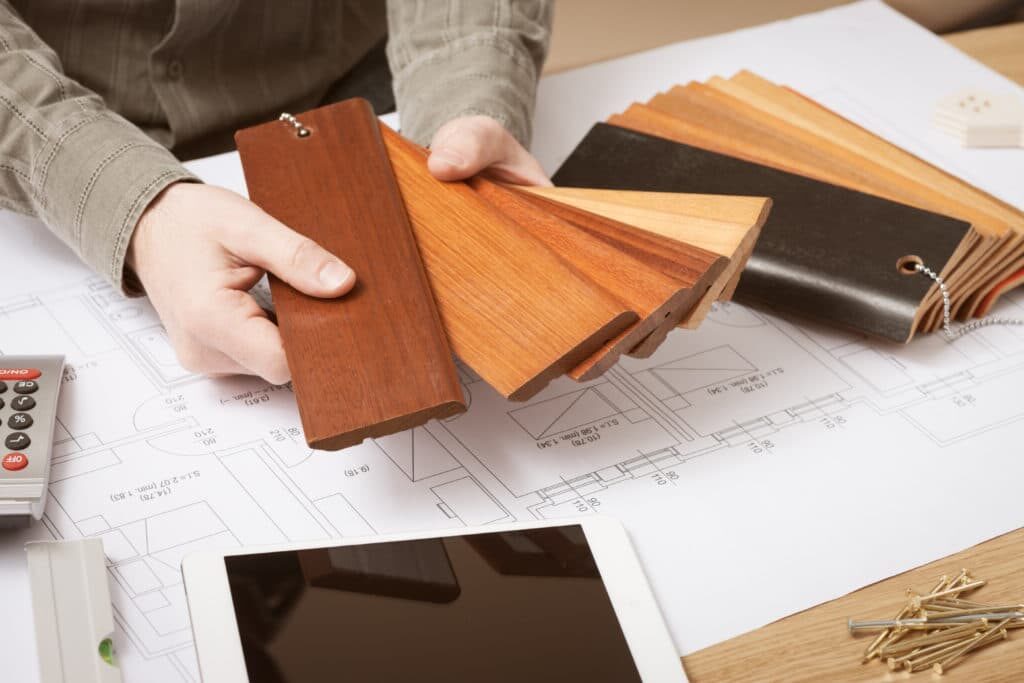
Installation and maintenance
Proper installation and maintenance of Wood Floors are essential for the longevity and performance of your waterproof wood flooring. Let’s explore the key considerations for installation and how to keep your flooring looking its best.
Installation Process
1. DIY vs. Professional Installation
- Decide whether to install the flooring yourself or hire a professional. While some waterproof wood flooring options are DIY-friendly, others may require specialized skills.
- Professional installation can ensure a flawless finish and may be necessary for certain materials, like solid hardwood.
2. Subfloor preparation
- Ensure that the subfloor is clean, level, and dry. Any imperfections or moisture issues in the subfloor can affect the performance of your flooring.
- Properly acclimate the flooring material to the room’s temperature and humidity for at least 48 hours before installation.
3. Installation Steps
- Follow the manufacturer’s installation guidelines and recommendations for the specific type of flooring you’ve chosen.
- Depending on the flooring type, you may need to use adhesive, nails, or a click-and-lock system for installation. Be sure to use the appropriate tools and techniques.
- Pay close attention to expansion gaps, especially in areas with temperature and humidity fluctuations. These gaps allow for the natural expansion and contraction of the wood.
Cleaning and maintenance tips
1. Regular cleaning
- Sweep or vacuum regularly to remove dust and debris that can scratch the surface of your flooring.
- Use a damp, but not wet, mop with a mild, pH-balanced cleaner recommended by the manufacturer to clean your floors. Avoid excessive water, as it can seep into seams and cause damage.
2. Preventing Water Damage
- Although waterproof, it’s still essential to clean up spills promptly to prevent any potential damage or staining.
- Place mats or rugs in high-traffic areas, especially near entrances, to capture dirt and moisture from shoes.
3. Protecting Against Scratches
- Use furniture pads or felt protectors under heavy furniture to prevent scratches and dents.
- Avoid dragging heavy objects across the floor, as this can cause damage to the surface.
4. Maintenance by Type
- Follow the specific maintenance instructions provided by the manufacturer for your chosen flooring type.
- For engineered wood and laminate, avoid excessive moisture and protect against scratches.
- Luxury vinyl planks and waterproof laminates require minimal maintenance but should still be cleaned regularly.
- Solid hardwood with waterproof sealant may require periodic resealing to maintain its waterproof properties.
5. Repairing Minor Issues
- In cases of minor damage, such as scratches or small dents, some flooring options can be repaired with touch-up kits or refinished.
- Consult with the manufacturer or a professional for guidance on repairing more significant damage.
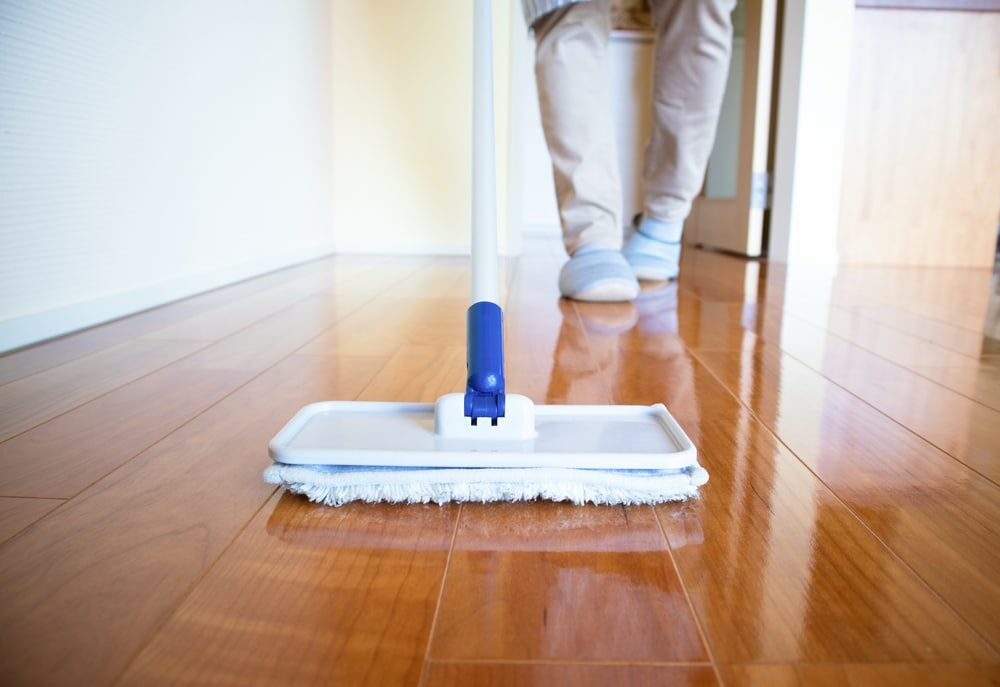
By following proper installation procedures and adopting a routine maintenance regimen, you can ensure the longevity and beauty of your waterproof wood flooring. Regular care will not only keep your floors looking pristine but also protect your investment for years to come.
Waterproof Wood Flooring vs. Traditional Wood Flooring
When it comes to choosing the right wood flooring for your space, it’s essential to understand the key differences between waterproof wood flooring and traditional wood flooring. Here’s a comparison to help you make an informed decision:
1. Resistance to moisture
- Waterproof Wood Flooring: As the name suggests, waterproof wood flooring is designed to resist water and moisture effectively. It can withstand spills, humidity, and even occasional flooding without significant damage.
- Traditional Wood Flooring: Traditional wood flooring, such as solid hardwood, is highly susceptible to moisture. It can warp, cup, or swell when exposed to water, making it unsuitable for areas prone to moisture or spills.
2. Versatility
- Waterproof Wood Flooring: Waterproof options are versatile and can be installed in a wide range of environments, including bathrooms, kitchens, and basements, where traditional wood flooring may not be practical.
- Traditional Wood Flooring: Traditional wood flooring is best suited for dry and controlled indoor environments like living rooms and bedrooms. It’s not recommended for moisture-prone areas.
3. Aesthetic Appeal
- Waterproof Wood Flooring: While waterproof options do a remarkable job of replicating the natural beauty of wood, some people may argue that traditional wood flooring offers a more authentic and timeless appearance.
- Traditional Wood Flooring: Traditional wood flooring is cherished for its classic and elegant look. It provides a unique charm that can be challenging to replicate with alternative materials.
4. Maintenance
- Waterproof Wood Flooring: Waterproof wood flooring generally requires less maintenance. It is easy to clean and doesn’t need periodic refinishing or resealing.
- Traditional Wood Flooring: Traditional wood flooring may require more maintenance, including refinishing every few years, to keep it looking its best and to protect it from wear and tear.
5. Cost
- Waterproof Wood Flooring: While the upfront cost of some waterproof wood flooring options may be higher than traditional wood flooring, they often offer long-term cost savings due to their durability and reduced maintenance needs.
- Traditional Wood Flooring: Traditional wood flooring can vary widely in price depending on the wood species and quality. Some exotic hardwoods can be quite expensive, both in terms of material and maintenance costs.
6. Installation
- Waterproof Wood Flooring: Many waterproof options are DIY-friendly and can be installed as floating floors, reducing installation costs. They also offer easy-to-use click-and-lock systems.
- Traditional Wood Flooring: Installing traditional wood flooring, especially solid hardwood, often requires professional installation, which can increase the overall project cost.
7. Environmental Considerations
- Waterproof Wood Flooring: Some waterproof wood flooring products are made with sustainable materials and eco-friendly finishes, making them a responsible choice for environmentally conscious consumers.
- Traditional Wood Flooring: Traditional wood flooring, when sourced from sustainable forests and responsibly harvested, can also be an eco-friendly choice. However, not all traditional wood flooring products meet these criteria.
In conclusion, the choice between waterproof wood flooring and traditional wood flooring depends on your specific needs, preferences, and the characteristics of the space where you plan to install it. Waterproof wood flooring offers durability and versatility in moisture-prone areas, while traditional wood flooring provides a classic and timeless aesthetic. Carefully evaluate your priorities and the demands of your space to make the best decision for your flooring project.
Conclusion
In the world of interior design and home improvement, waterproof wood flooring is a true game-changer. This comprehensive guide has delved into the depths of this innovative flooring solution, helping you make informed decisions for your next project. From types and benefits to installation, maintenance, and even a comparison with traditional wood flooring, we’ve covered it all.
Choosing the right waterproof wood flooring is not just about functionality; it’s also about creating a beautiful and lasting aesthetic in your space. The benefits of durability, resistance to moisture, low maintenance, and a wide range of design options make it a practical choice for homeowners, business owners, and DIY enthusiasts alike.
Whether you’re remodeling your bathroom, kitchen, basement, or any other area prone to moisture, waterproof wood flooring offers the ideal blend of style and practicality. With the information provided in this guide, you can confidently select the perfect flooring option for your needs, knowing that you’re making an investment that will enhance your living space for years to come.
As you embark on your flooring journey, remember to consider your specific requirements, your budget, and the overall ambiance you want to create in your home or business. By doing so, you’ll be well on your way to enjoying the timeless beauty and functionality of waterproof wood flooring.
Thank you for joining us on this exploration of waterproof wood flooring, and we hope this guide has been a valuable resource on your path to making the best flooring choices for your space.

Sanding
We provide virtually dust-free sanding with our continuous belt machinery with mobile extraction units, giving you a safer environment for your family.
Oiling
This organic finish not only adds beauty to your home but also has exceptional water-repellent characteristics, making it easier to clean and maintain.
Waxing
This natural floor finish offers the softest and most mellow appearance – and leaves your floor able to breath.
Buffing
Using soft buffing machines (and hand-polishing where required) will bring a wonderful sheen to your newly-finished floor.
Repairs
We offer a full assessment of your wooden floors to determine what repairs are needed to provide the perfect working surface for the later stages of sanding, staining and sealing.
Restoration
We offer a comprehensive restoration process designed to address floors that are improperly fitted or damaged over time through wear and tear.
Request a fixed price quote for your wood floor restoration now
Simply enter your postcode below to get started.
Services
Wood Floor Sanding Wood Floor Restoration Wood Floor Scratch Repair Squeaky Wood Floor Repair Parquet Floor Sanding Parquet Floor Restoration Commercial Floor Sanding Church Floor Sanding Community Centre Floor Sanding School Floor Sanding Gap Filling Gap Filling with ResinCopyright © Mr Sander®
Privacy & Cookies Terms & Conditions Complaints Procedure Cancellation Rights Sitemap